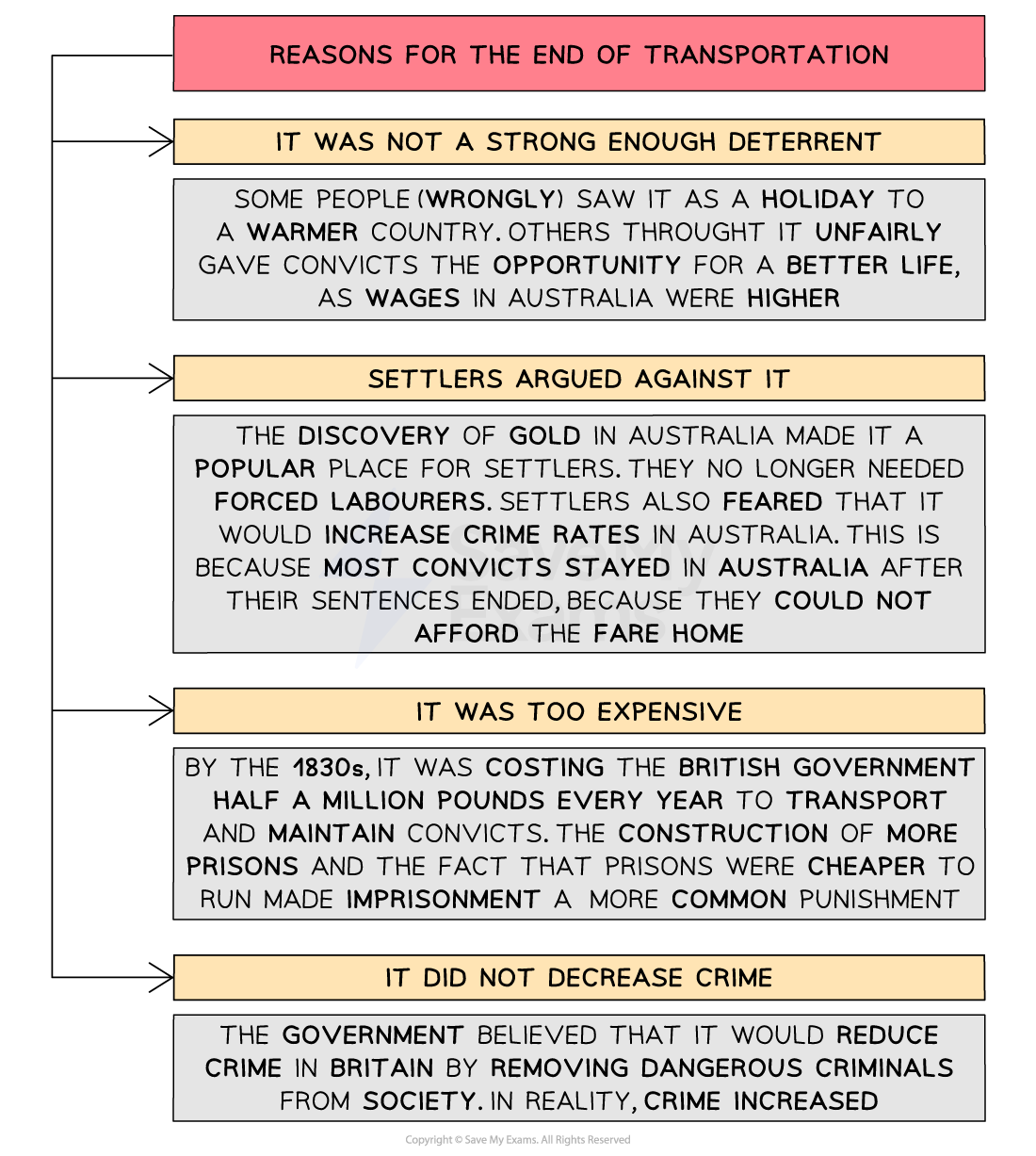Punishments in Eighteenth & Nineteenth-Century Britain (Edexcel GCSE History): Revision Note
Exam code: 1HI0
Punishments in Eighteenth- and Nineteenth-Century Britain - Timeline & Summary

In the 18th and 19th centuries, crime increased dramatically. In an attempt to deter crime, the government expanded the ‘Bloody Code. This backfired. Fewer people believed that the aims of punishment should be deterrence and retribution. More people thought that punishment should aim for rehabilitation. After transportation to America ended, the government began sending convicts to Australia. This stopped when it became clear that crime was still increasing. Imprisonment then became a much more common form of punishment. Reformers like John Howard and Elizabeth Fry heavily criticised the poor conditions of prisons. Their work was highly influential, ultimately leading to further reforms under Robert Peel. |
Why did People's Opinion About Punishment Change in Eighteenth- and Nineteenth-Century Britain?
In the 18th and 19th centuries, people’s opinions on punishments were changing
This was largely due to the failure of the ‘Bloody Code’
The public felt that the government was not fulfilling the aims of punishment
Why did People’s Attitudes Changed to the Aims of Punishment?
Deterrence | Retribution | Rehabilitation |
|---|---|---|
Public executions no longer put people off committing crimes. Many started to see them as cheap entertainment and a chance to get drunk. Others feared attending them because the large crowds created opportunities for more crimes, especially pickpocketing | The punishment no longer fits the crime. People began to think that corporal and capital punishments were inhumane for anything apart from very serious crimes, like murder. Juries were unwilling to convict people, so some guilty criminals were found innocent and escaped justice | More and more people began to believe that punishment should aim to reform criminals. Corporal punishment was seen as a form of painful revenge, rather than a chance for criminals to reflect on their crimes. Capital punishment made rehabilitation impossible |
The public’s changing opinions had an impact on government policy
Robert Peel’s reforms abolished the ‘Bloody Code’
Public executions ended
Use of the death penalty significantly decreased
Other forms of punishment increased
First, transportation
Second, imprisonment
Australia and the End of Transportation as Punishment
Transportation to Australia
By the late 18th century, transportation was the most frequently used punishment in Britain
Overall, around 160,000 people were transported to Australia
One in six were women
Most were thieves (especially reoffenders)
A small number were political protesters
What happened when convicts arrived to Australia?

The end of transportation
In the 1840s, transportation began to decline

Increase in Imprisonments & Prison Reform
Early modern prisons were mainly used to hold criminals awaiting trial
This changed in the 18th and 19th centuries
Imprisonment was increasingly used as a form of punishment
It became even more common after transportation ended
Prison conditions remained very poor
Many thought that criminals in prison deserved these poor conditions
Others thought that improving prison conditions would increase criminals’ chances of rehabilitation
Two key reformers who shared this view were
John Howard
Visited many prisons throughout Britain
Published a report detailing problems in prisons and how to address them
His work led to the 1774 Gaol Act
What did Howard recommend?

Elizabeth Fry
Visited women in Newgate Prison
Worked on making female prisoners’ lives better
Her work influenced the 1823 Gaols Act
What did Fry recommend?

Worked Example
Explain one way in which opinions about punishment changed in eighteenth- and nineteenth-century Britain
4 marks
Answers:
In 18th- and 19th-century Britain, fewer people thought that the aims of punishment should only be deterrence and retribution. (1) More people started to believe that punishments should aim to rehabilitate criminals (1). Juries became unwilling to convict criminals in cases of capital offences. (1) They recognised that the death penalty gave criminals no opportunity to reform (1)
Examiner Tips and Tricks
Remember that the aims of punishment – deterrence and retribution – essentially stayed the same from the medieval era up until this period. It was largely the work of reformers that made people care more about reform and rehabilitation.

Unlock more, it's free!
Did this page help you?